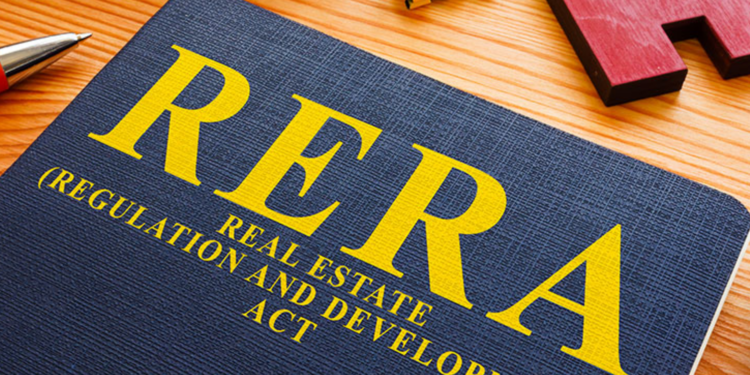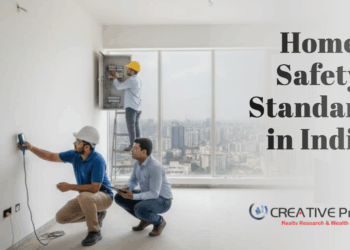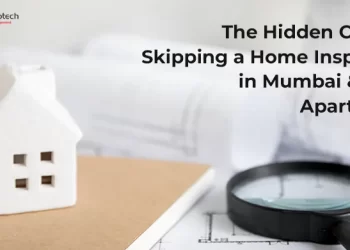When buying a home in India, many buyers take comfort in knowing that the project is RERA-registered. After all, the Real Estate (Regulation and Development) Act, 2016 was implemented to bring transparency, accountability, and fairness to the real estate sector. While RERA has certainly improved the landscape for homebuyers, it does not necessarily guarantee that the property you’re purchasing is free from defects.
This is where an independent home inspection becomes crucial. Just because a project is RERA-compliant doesn’t mean it’s defect-free. In fact, RERA focuses more on documentation, delivery timelines, and basic structural integrity—not the finer details that could lead to costly repairs after possession.
Let’s understand why a home inspection is still essential, even for RERA-approved properties.
RERA Ensures Compliance, Not Quality Assurance
RERA mandates that developers register their projects and adhere to approved plans and promised specifications. It brings transparency to transactions, discourages delays, and protects buyers from unethical practices.
However, RERA does not include a mandatory quality check or detailed physical inspection of every unit. It doesn’t examine the electrical wiring, plumbing, tiling, waterproofing, or workmanship of individual homes. A property may be RERA-compliant but still have leaky bathrooms, cracked tiles, or poor-quality fittings.
This is where a home inspection comes in. It offers a layer of protection that goes beyond legal compliance, helping you detect defects that may otherwise go unnoticed.
What Most Homebuyers Overlook in RERA-Compliant Projects

For many homebuyers, a RERA-compliant project is seen as a stamp of assurance. It creates a sense of security that the home will be delivered on time and meet the promised specifications. However, in the rush to secure possession or close the deal, buyers often miss out on checking the actual, physical quality of the home.
RERA primarily governs documentation, financial practices, and structural integrity over a five-year window. But it doesn’t inspect every flat for finish quality, safety concerns, or livability. This gap leaves room for several hidden defects to go unnoticed—until it’s too late.
One of the most common issues is plumbing leakage. Improper sealing in bathrooms or kitchens can result in seepage, low water pressure, or even mold growth in walls. These problems might not be visible during a basic walkthrough but can be identified by a professional home inspection.
Another frequently missed problem is faulty electrical wiring. Loose connections, missing earthing, or overloaded circuits are dangerous and can lead to short circuits or even fires. These are rarely caught by buyers without a detailed inspection of sockets, switchboards, and circuit breakers.
Then there’s the issue of poor tile work or flooring defects—uneven surfaces, hollow tiles, and misaligned grout lines that can lead to long-term maintenance problems and safety risks. Buyers also often overlook window and door alignment, which can affect ventilation, security, and energy efficiency.
Waterproofing is another critical area. Damp patches, swelling woodwork, or early signs of mold are indicators of deeper waterproofing failures. These often take months to show up but can be detected early using moisture meters or thermal cameras during an inspection.
While the builder may have followed RERA norms in terms of structure and approvals, these surface and utility-level defects can still be present. Unfortunately, they aren’t always easy to identify during a standard site visit—and once you move in, the burden of fixing them could fall on you.
A home inspection bridges this gap. It ensures that everything behind the walls, under the tiles, and above the ceiling meets the quality standards you deserve—not just what’s promised on paper.
What RERA Covers—and What It Doesn’t
RERA covers:
- Project registration and approval of plans
- Timely possession
- Structural defect liability for 5 years
- Financial transparency between developers and buyers
- Standardization of sale agreements
What RERA doesn’t cover:
- Internal finishing quality of individual units
- Plumbing leaks or blockages
- Electrical safety and wiring standards
- Tile alignment and flooring defects
- Dampness or waterproofing issues
- Window or door alignment
This gap in scope makes it clear why a home inspection is important. A trained inspector checks for construction quality, safety, functionality, and finishing errors—areas where RERA doesn’t necessarily intervene.
Real-World Problems Found in RERA-Compliant Homes
Just because a home has the RERA stamp doesn’t mean it’s flawless. Many buyers have reported issues such as:
- Cracks in walls within months of moving in
- Non-functional or leaking plumbing
- Loose or improperly installed tiles
- Poor water pressure or drainage issues
- Missing electrical earthing
These are not minor inconveniences—they can lead to major repair costs, stress, and reduced property value if not addressed early. Home inspections catch such defects before you take possession, giving you leverage to get them fixed by the builder.
RERA Offers Legal Protection, Not Technical Evaluation
RERA gives you the right to file complaints and seek compensation. But the process can be time-consuming, and it assumes you can identify and prove the issue. A home inspection gives you documented, professional evidence of the problem—which makes your legal claim stronger, if it comes to that.
Better yet, it helps you avoid needing legal action altogether. Most builders are willing to fix issues flagged in an inspection report before handover.
What a Home Inspection Covers
A professional home inspection usually includes:
- Structural and surface-level checks
- Electrical system testing (switches, sockets, earthing, circuit breakers)
- Plumbing and bathroom inspection (leaks, pressure, drainage)
- Wall and ceiling finish
- Door and window alignment
- Flooring quality and tile integrity
- Dampness and seepage detection
With thermal imaging and moisture meters, trained inspectors can even identify hidden issues that aren’t visible to the eye.
Conclusion
RERA is a great regulatory framework, but it’s not a substitute for professional evaluation. Think of RERA as the legal protection layer and home inspection as the technical assurance layer. Together, they give you complete confidence in your home purchase.
In short, RERA ensures the developer follows the rules. A home inspection ensures your home is truly ready to live in.
So before you take possession—even in a RERA-compliant project—book a professional home inspection. It’s a small investment for big peace of mind.
FAQ
1. If a property is RERA-registered, do I still need a home inspection?
Yes, RERA registration ensures legal and procedural compliance, but it does not evaluate the physical condition or quality of the individual unit. A home inspection helps identify hidden defects and finishing issues that RERA does not cover.
2. What kind of defects are usually found in RERA-compliant homes?
Common issues include water seepage, faulty wiring, poor plumbing, loose tiles, uneven flooring, and improper door or window fittings. These can impact both safety and comfort if not addressed early.
3. Can I use the home inspection report to request repairs from the builder?
Absolutely. A professional inspection report gives you documented evidence, which you can present to the builder before possession. Most developers are willing to fix the issues flagged in the report during the snagging stage.
4. Does RERA offer any guarantee on construction quality?
RERA mandates developers to fix structural defects for up to five years post-possession. However, it does not cover surface-level or functional flaws like poor finishing, seepage, or minor electrical issues—these are usually left to the buyer to detect and resolve.
5. When is the best time to schedule a home inspection?
Ideally, a home inspection should be done just before taking possession, during the pre-handover phase. This ensures that any issues are identified and resolved before you move in.






